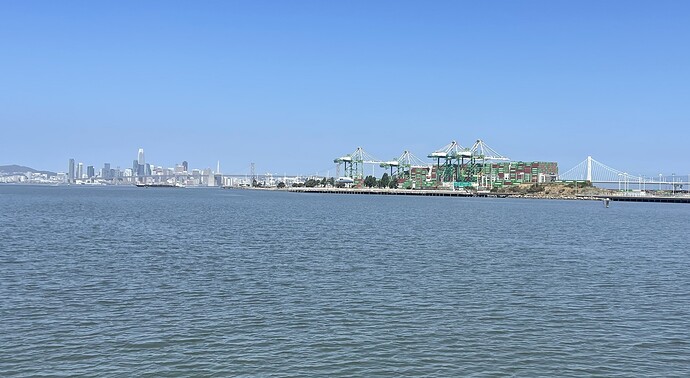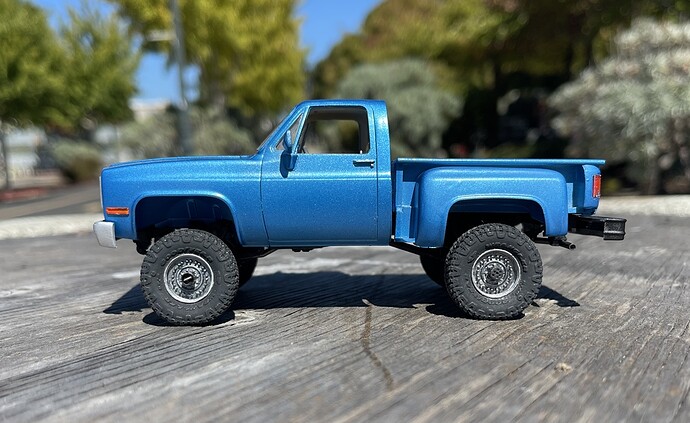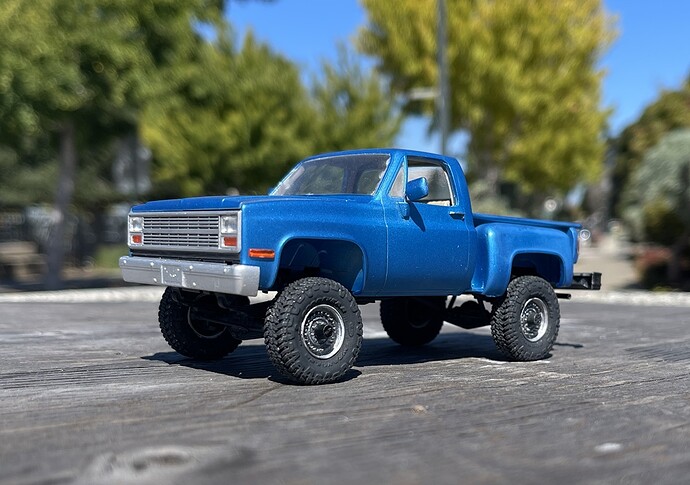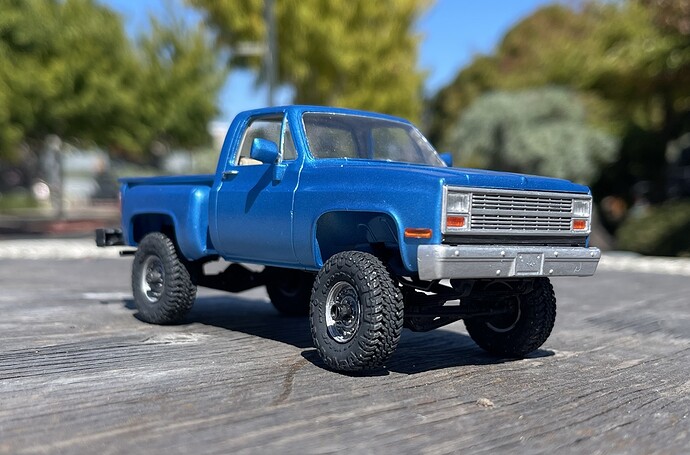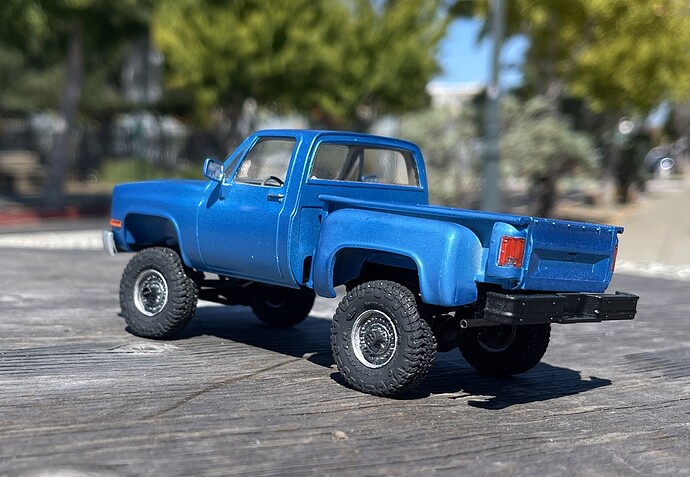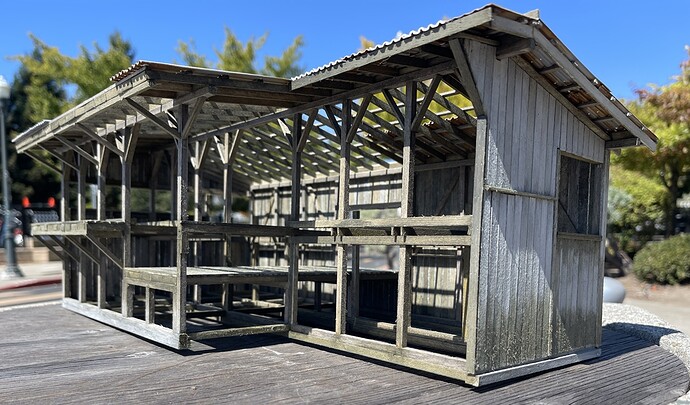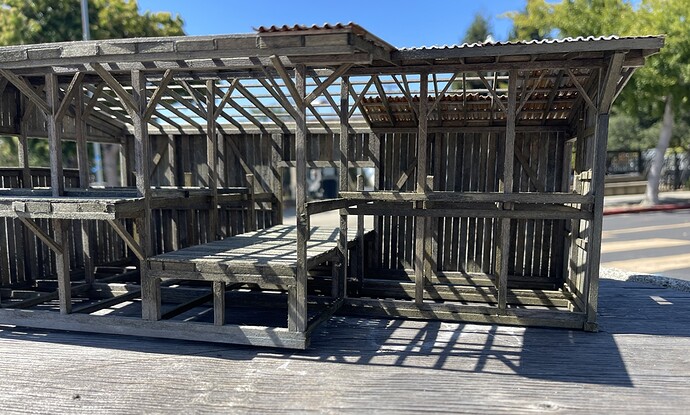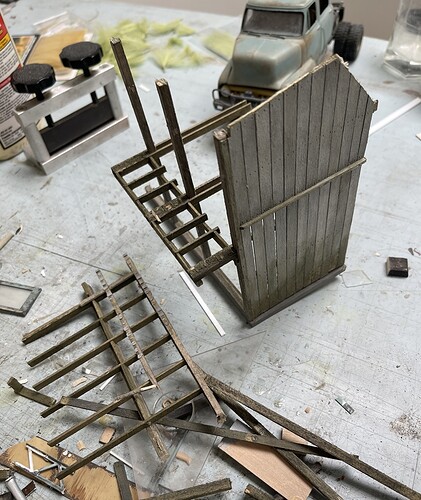@Johnnych01, thanks, John! Yes, that sign - considering the decrepitude of the shed, no way it would still be square!
@Uncle-Heavy, ha!
@Dioramartin, thanks Tim, but, you of all people get the dio-builder’s need-for-tedium! lol. Yes, weathering board by board, and nailing board by board - yep, great idea ![]() As for the broken boards and rot in corner, glad you noticed that. It seemed to call for something unique. Oh, and my exceptionally high tech photo stand:
As for the broken boards and rot in corner, glad you noticed that. It seemed to call for something unique. Oh, and my exceptionally high tech photo stand:
May I introduce the humble street bollard! Turns out there’s a bicycle boulevard near me, and well, they use these to separate cars from bikes, whereas, I use them to photo my art! ![]()
@KoSprueone, hi KSO, as a fellow rail enthusiast I’m sure you’ve seen these in the train stores. Very inexpensive and: 1) hard to use on (to cut in and install flush!) loco long hoods; and, 2) perfect for this! ![]()
@Barney, thanks from here on the big trick will be to not screw it up! ![]()
Speaking of the potential to screw it all up, how about coloring the vast expanse of pavement?
Yeah - build up some confidence and see what happens, and count on some positive energy from the great Bob Ross:
So the process is to spray “wet water” (aka: Wetting Aid by Golden) mixed with regular water in smallish patches (I tried for about 20% of the total size of the paved area at a time) then randomly drop one of three shades of Vallejo Model Air, and blend with a wide brush.
While this is not hard to do, it did take some nerve to actually start, so here we go - color coat 1, using Pale Blue Grey:
Let sit over night, and apply coat 2, with Dark Grey Blue:
And, the next day coat three, with Dark Sea Grey:
As these are each essentially giant applications of acrylic washes, the colors build up as stains, rather than painting per se.
And a close up:
So while this has been multi step process, the results are good so far. Next is to detail the surface, by adding dirt color washes where the pavement has been eaten away to gravel and dirt then to add accent Anthracite Grey washes to selected cracks - maybe even some slimy green where water might be prone to stand.
While not easy to see, I’ve been adding other landform features with various textures around the perimeter while waiting for paint to dry. They’ll be stained the same way - adding a variety of color washes to get the look I’m after. These areas will eventually get some grass and vegetation.
OK, hopefully the next picture will show the pavement done.
Cheers
Nick






